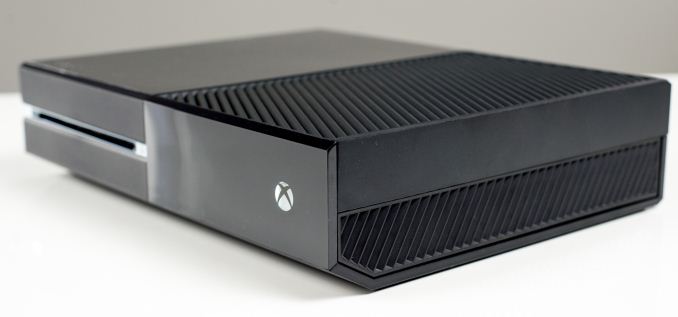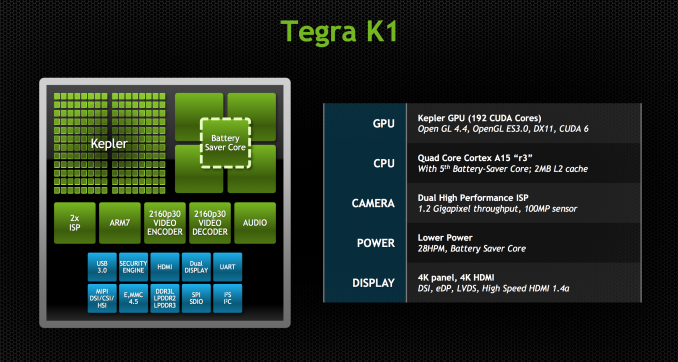Microsoft Announces DirectX 12: Low Level Graphics Programming Comes To DirectX
by Ryan Smith on March 24, 2014 8:00 AM ESTThe Changing State of Game Development
The entry of Microsoft and Direct3D into this world stands to significantly change the status quo, due to the fact that Direct3D is by far the most widely used PC graphics API. As the maintainer of Direct3D Microsoft gets to set the pace in the PC graphics industry in several ways, so while Direct3D 12 won’t be the first modern low level graphics API, there’s little question after this announcement that it’s going to have the widest impact on game developers.
Perhaps the biggest reason for this is because of the fact that like every version of Direct3D before it, Direct3D 12 is going to be a cross-vendor standard that works on multiple GPUs. Though I don’t think it’s wise to treat Mantle and Direct3D as competitors at this point, the fact that this is a cross-vendor standard and not an AMD standard means that using it targets every video card and not just AMD video cards. So for all of the impact Mantle has had over the past 6 months, and will continue to have over the coming years, the fact that we’re to a point where there’s a cross-vendor standard will be a significant milestone.
That said, whenever we talk about low level programming it’s good to also recall who this model is and isn’t for. The purpose of abstraction is not only to provide wider hardware compatibility, but to outright hide certain types of execution ugliness from programmers. The reduction in abstraction will bring with it a reduction in the amount of this ugliness that gets hidden, and as a result the amount of knowledge needed to efficiently program at a low level goes up. Low level programing should not require a code wizard, but it’s unquestionably harder than straightforward (no optimization tricks) Direct3D 11.
Which is why the launch of Direct3D 12 is poised to increase the number of options available to graphics programmers, but not replace the high level programming model entirely. The development teams best suited for taking advantage of Direct3D 12 will be the well-funded AAA game studios, particularly those doing multi-platform titles across PCs and consoles. If you’re already doing low level programming for Xbox One and Playstation 4 – and more importantly have the staff and institutional knowledge for such an endeavor – then Direct3D 12 is but a small step, mostly one of learning the syntax of the new API. But for smaller game developers that aren’t able to put together large, experienced game development teams, then a need for a high level programming API will remain. Microsoft has not talked about high level programming within the context of Direct3D 12 thus far, but one way or another – be it Direct3D 11 or a high level friendly Direct3D 12 – high level programming will be here to stay.
Though when it comes to development, the role of middleware cannot be ignored. AMD and NVIDIA already target middleware developers for integration of their proprietary technologies, and the same concept applies on a larger scale when we’re talking about making low level programming accessible to more developers. Furthermore with the massive change in middleware licensing terms we’re seeing with this generation – Unreal Engine 4 for example is just 5% of gross revenues for smaller developers that can’t negotiate otherwise – powerful middleware is increasingly accessible to all categories of developers. So even if smaller developers can’t internally develop their own Direct3D 12 code, they will have the ability to target it by inheriting the capabilities through the middleware they use.
Consoles & Mobile Devices Too
The introduction of Direct3D 12 stands to not only change the nature of graphics development for Windows, but on other Microsoft platforms too. With Microsoft’s consumer arm having their hand in everything from phones to consoles, Microsoft is seeking to extend Direct3D 12 and its benefits to these platforms too.
Specifically, Microsoft is already committing to bringing Direct3D 12 to the Xbox One, their current-generation console. Powered by an AMD SoC whose GPU in turn is based on GCN 1.1, the Xbox One is functionally an x86 PC with a modern AMD GPU, so the fact that this is even technically possible is not a surprise. But what does come as a surprise is that the Direct3D12 API is different enough that this is even necessary.
The Xbox One, as you may recall, uses Microsoft’s Direct3D 11.X API. This details of this API are scarce as they’re only open to registered Xbox One developers, but fundamentally it’s said to be a variant of Direct3D 11 with a number of Xbox One additions, including low level API features that would be suitable for programming a console. Having the Xbox One be in alignment with Direct3D 12 is going to be a good thing regardless – it will make porting between the platforms easier – but the fact that Direct3D 12 will bring any kind of meaningful improvement to the Xbox One is unexpected. Without more details on the Xbox One API it’s impossible to say with any certainty what exact functionality isn’t currently available in Direct3D 11.X or what kind of performance benefit this would bring the Xbox One, but it stands to reason that unless most Xbox One programmers have been doing high level programming, the gains won’t be as great as for the PC.
Moving on, we have the fact that Microsoft will also be bringing Direct3D 12 to handheld devices. We’re presumably talking about Windows RT tablets and Windows Phone phones, extending Direct3D 12 to the bottom as well as it goes to the top on the PC. Handheld devices stand to gain just as much from this as PCs and consoles do, due to the fact that handheld devices are even more CPU-bottlenecked than PC laptops and desktops, so a low level API is as much a natural development for these platforms as it is the PC.
The question on our end is what kind of impact this will have on the Direct3D 12 standard with respect to abstraction. SoC-class GPUs are typically years behind PC GPUs in functionality (never mind performance), and at least among current GPUs wildly differ from each other in ways the PC GPU market hasn’t seen in years. So while extending Direct3D 12 to cover multiple PC GPUs should be relatively easy, having to support SoC GPUs certainly muddles the picture. This may mean Microsoft is looking at the long view here, when SoCs such as the Tegra K1 come along with feature sets that match recent PC architectures, coupled with the fact that Windows RT/Phone has not traditionally supported a large number of SoC GPU architectures. In which case only having to cover a handful of SoC GPU architectures instead of all 7 would certainly be an easier task.













105 Comments
View All Comments
nathanddrews - Monday, March 24, 2014 - link
Forza 5 runs 60fps at 1080p on Xbone. I think the point of the Titan Black demonstration was that with only "four months of man-hours of work" they were able to flawlessly port it not only to DX12, but also to PC. It showcases the ease of porting using DX12 and the compatibility of DX12 with Kepler. Given that the TItan Black is 3-4x faster than the GPU in the Xbone, it stands to reason that taking more time with a port or developing side-by-side would yield a much better experience on the PC side.I'm sure that somewhere there's a Xfanboy claiming that the Xbone is as powerful as a Titan Black.
ninjaquick - Monday, March 24, 2014 - link
Not just that, but to non-AMD hardware, which means not only does it port over "easily", it works on hardware from all vendors.krumme - Monday, March 24, 2014 - link
Damn nice article.How can fermi be compatible when it doesnt support blindless textures?
SydneyBlue120d - Monday, March 24, 2014 - link
It seems even more funny the fact that Nvidia Maxwell doesn't fully support Direct X 11.1, yet it seems they're all Direct X 12 compliant :)inighthawki - Monday, March 24, 2014 - link
Don't confuse the software with the feature set. Maxwell works on DX11.1, it just not 100% compliant with all features exposed by 11.1. DX12 may also expose hardware features that are incompatible with Maxwell but will still run at a lower "11.0" feature level.YazX_ - Monday, March 24, 2014 - link
i believe this will only benefit the low end CPU users base, and specifically all AMD $hitty CPUs. on high end CPUs, there is no bottleneck so the gain will be very minimal.kyuu - Monday, March 24, 2014 - link
There is only no bottleneck with high-end CPUs because game developers design the game within the limitations of the CPU, which, as stated in the article, have not kept pace in terms of performance growth with GPUs. A big limitation that developers lament is in the number of draw calls.So while you're correct that current games will not see much benefit when run on higher-end CPUs, future games will be able to do more and therefore games will improve for everyone on all hardware. Also, you should consider that a high-end CPU becomes mid-end and then low-end over time -- these DX12 (and Mantle) improvements mean that it becomes less necessary to upgrade your CPU, which saves money that can be put into another part of your system (say, the GPU?).
Homeles - Monday, March 24, 2014 - link
"i believe this will only benefit the low end CPU users base, and specifically all AMD $hitty CPUs. on high end CPUs, there is no bottleneck so the gain will be very minimal. "In other words, most computers.
ninjaquick - Monday, March 24, 2014 - link
D3D12 is not a response to Mantle, as you would assume, rather it is a response to substantial developer feedback/pushback against the massive decrease in low-level access and programmability of the X1 compared to the X360. Microsoft has a unified platform vision that they are stubborn to stick to, so the d3d12 development advances made for the X1 are directly portable from the WindowsX1 (RT/8-x64 hybrid) to WindowsRT/WP8/Win8.Mantle is a far broader implementation, and is only possible thanks to AMD's hardware scope, as HDMA/hUMA and the massive improvement in GPU DMA are really only possible (as of yet) on AMD's hardware and software packages. D3D12 will not make much of a difference on platforms other than the X1, where developers [should be] getting more DMA for GPU task, beyond D3D buffer allocation, etc.
jwcalla - Monday, March 24, 2014 - link
If you want your game to have a mobile presence and be on Steam Machines, you're going to need OpenGL. You can get access to just about all the hardware features and performance you want with OpenGL 4.4.Time for devs to give it a second look IMO.